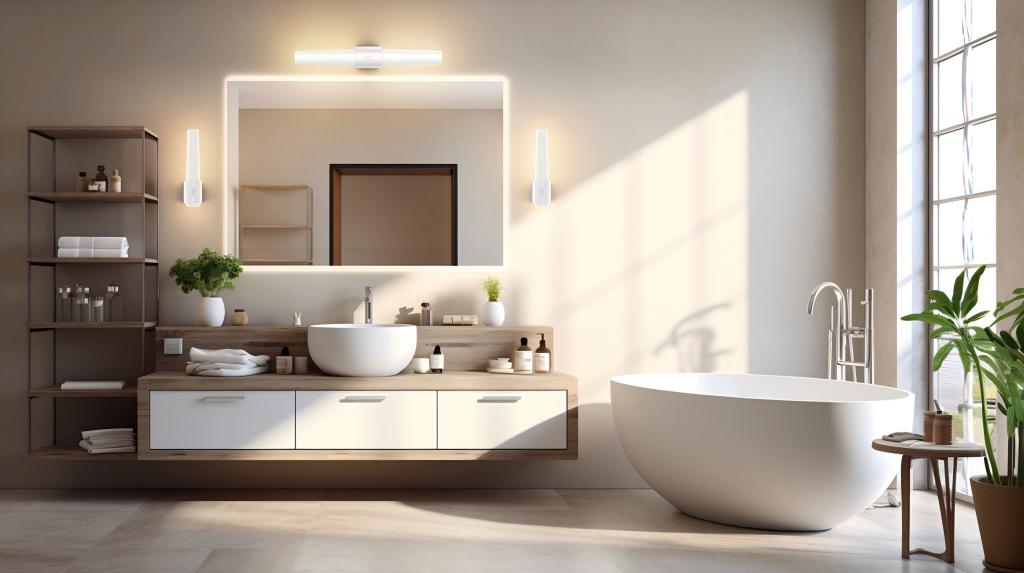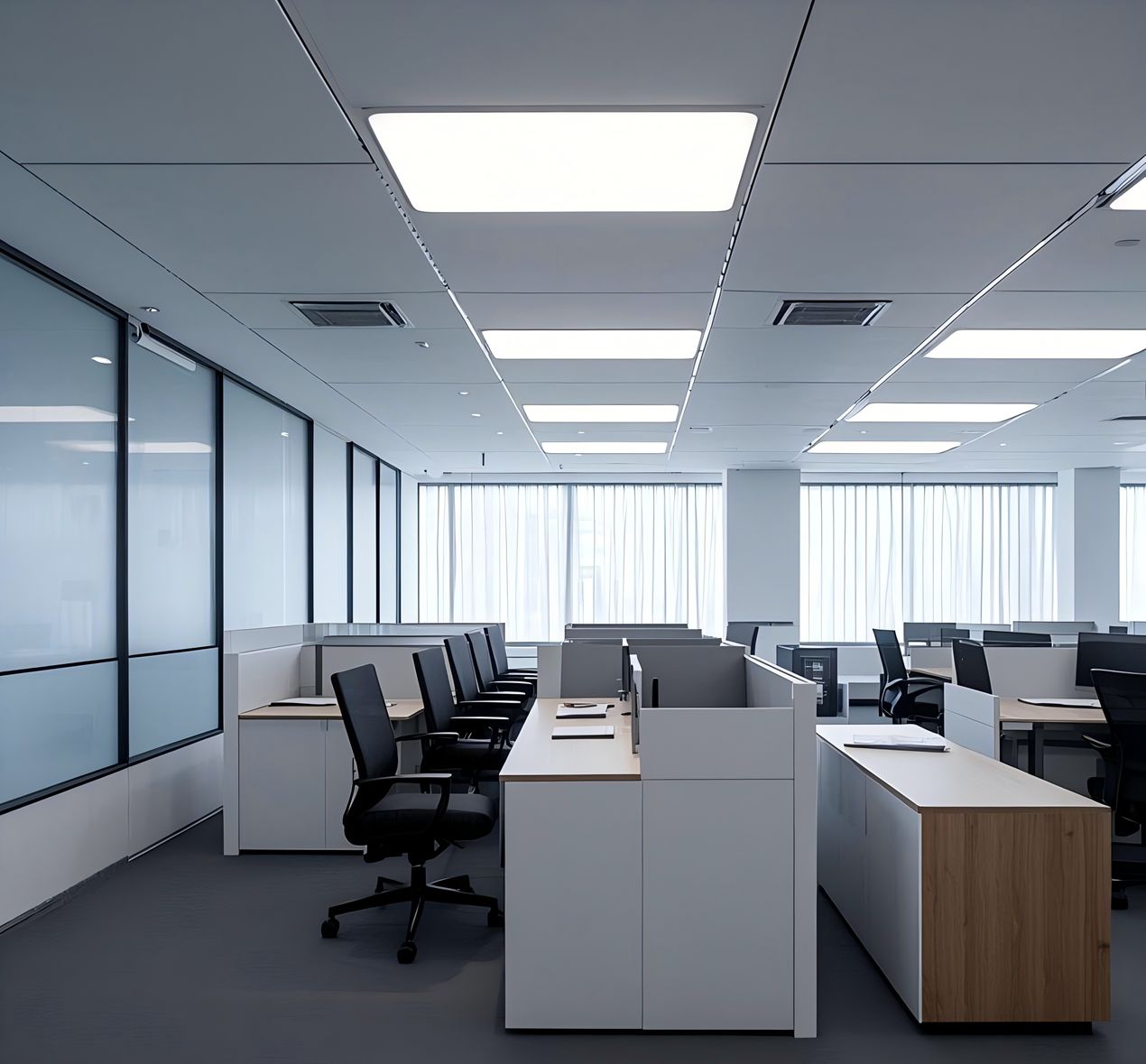
Hot keywords: Drugstore, Chemist shop, Medicamentarius, Pharmacy
- The importance of lighting in pharmacies
- 1.1 Create a comfortable and healthy environment
- 1.2 Improve product display effect
- 1.3 Guide customers to shop
- Pharmacy lighting design principles
- Selection of drugstore lighting fixtures
- 3.1 Lamp type selection
- 3.2 Light color temperature and illumination selection
- 3.3 Safety and energy-saving considerations
- Layout and arrangement of lighting fixtures
The importance of lighting in pharmacies
1.1 Create a comfortable and healthy environment
Creating a comfortable environment is crucial to our life and work. Especially in pharmacies, comfortable and healthy lighting design can make clerks feel comfortable working and customers feel safe shopping. A comfortable and healthy environment can also reduce the stress and anxiety of customers who may be suffering from illness or pain, and increase their trust and satisfaction with the pharmacy service.
1.2 Improve product display effect
Since there are various types of medicines, the display location of each category is very important. It is necessary to classify products well and use main lights and auxiliary lights to illuminate their product features accordingly. Different types of medicines may require different lighting conditions to preserve their quality and efficacy. For example, some medicines may be sensitive to light and heat and need to be stored in dark and cool places. Therefore, the lighting design should take into account the storage requirements of different medicines, and avoid excessive or inappropriate lighting that may damage the medicines.
1.3 Guide customers to shop
Guidance lighting refers to using lights to guide customers’ sightlines and action routes through reasonable design and layout, thereby enhancing the sense of space and hierarchy in the pharmacy. A good commercial lighting is guiding. Good guiding lighting can improve the recognition and brand image of the pharmacy. Secondly, through reasonable lighting layout, the characteristics and value of drugs can be highlighted, thereby promoting sales. Guidance lighting can also help customers find the medicines they need quickly and easily, and reduce the confusion and frustration caused by complex and messy shelves. By using different colors, brightness, and directions of lighting, the pharmacy can create a clear and intuitive navigation system that can direct customers to the right areas and products.
Pharmacy lighting design principles
2.1 Consider the visual comfort of customers
Improving the visual comfort of pharmacy customers is a reflection of considerate service. Paying attention to the visual comfort of pharmacy customers is an important part of pharmacies providing quality services. Lighting design that avoids glare and shadows, from bright lighting, clear drug descriptions, to reasonable shelf layout, every detail is related to the customer’s visual experience. Visual comfort also affects the customer’s mood and perception of the pharmacy. If the lighting is too dim or too bright, it may make the customer feel depressed or irritated, and affect their willingness to buy or return. If the lighting is too harsh or uneven, it may cause eye fatigue or headache, and affect their ability to read the drug information or labels. Therefore, the lighting design should balance the brightness, contrast, and color of the lighting, and provide a soft and natural light that can make the customer feel relaxed and comfortable.

Selection of drugstore lighting fixtures
3.1 Lamp type selection
Common drugstore lighting includes chandeliers, ceiling lamps, downlights, and spotlights. Chandeliers are suitable as focal lighting to highlight certain medicines or areas; ceiling lamps are suitable for basic lighting, providing uniform illumination; downlights and spotlights are suitable for local lighting to highlight the characteristics of medicines. When choosing pharmacy lamps, we must also consider the material and quality of the lamps. High-quality lamp materials can ensure soft and comfortable light while extending service life. High-quality lamps can reduce maintenance costs and bring long-term economic benefits to pharmacies. The shape and style of the lamps should also match the overall decoration and theme of the pharmacy, and create a harmonious and aesthetic visual effect. The size and number of the lamps should also be appropriate for the space and layout of the pharmacy, and avoid overcrowding or under-lighting. The installation and wiring of the lamps should also be safe and neat, and avoid any potential hazards or obstacles.
3.2 Light color temperature and illumination selection
Understand the impact of color temperature on customer psychology. Warm-colored lighting can create a warm and friendly atmosphere, allowing customers to feel the care and warmth of the pharmacy; while cool-colored lighting gives people a refreshing and professional impression, which is conducive to shaping the professional image of the pharmacy. The color temperature of the lighting should also be suitable for the type and function of the medicines. For example, warm-colored lighting can be used for medicines that are related to health and wellness, such as vitamins and supplements, to convey a sense of vitality and energy. Cool-colored lighting can be used for medicines that are related to cold and fever, such as antibiotics and antipyretics, to convey a sense of cleanliness and effectiveness.
3.3 Safety and energy-saving considerations
Safety, energy saving, and environmental protection are important considerations when choosing lighting fixtures in pharmacies. Choosing safe and energy-saving lamps can reduce energy consumption and conform to the concept of green environmental protection. At the same time, new light sources such as LED have higher energy efficiency and bring higher cost performance to pharmacies. LED lamps also have other advantages, such as long service life, low heat generation, high color rendering, and wide color range. LED lamps can provide more flexible and diverse lighting options for pharmacies, and meet the different lighting needs of different medicines and areas. LED lamps can also reduce the emission of harmful substances such as mercury and ultraviolet rays, and protect the environment and human health.

Layout and arrangement of lighting fixtures
4.1 Reasonably distribute the positions of lighting fixtures
Reasonably distribute the positions of lighting fixtures. The layout of lighting fixtures should not only consider the lighting effect but also consider the movement and line of sight of customers. We must arrange appropriate lighting fixtures in key locations such as shelves, drug display areas, and cashier counters to ensure that customers can see the drugs from any angle, while also avoiding direct light shining into customers’ eyes. The distribution of lighting fixtures should also follow the principle of symmetry and balance, and avoid creating a sense of disorder or chaos. The lighting fixtures should be arranged in a way that can create a smooth and natural transition between different areas and levels of the pharmacy, and avoid creating a sense of abruptness or discontinuity. The lighting fixtures should also be consistent with the shape and direction of the shelves and counters, and avoid creating a sense of conflict or mismatch.
4.2 Highlight lighting in key areas
Spotlights can be used to illuminate areas that require special emphasis. The spotlight can produce a strong beam of light, making this area different from other areas. According to the functions and needs of different areas of the pharmacy, the light color can be adjusted so that the product content can be displayed more vividly and attractively. For example, spotlights can be used to highlight the new or popular medicines, special offers or discounts, seasonal or thematic medicines, and the pharmacy’s own brand or signature products. Spotlights can also be used to create a sense of focus and contrast and draw customers’ attention and curiosity. Spotlights can also be used to create a sense of drama and excitement, and enhance customers’ emotional involvement and interest.
4.3 Maintain overall lighting consistency
What we need to pay attention to is keep the drugstore lighting consistent is the key to creating a pleasing and professional retail environment.










